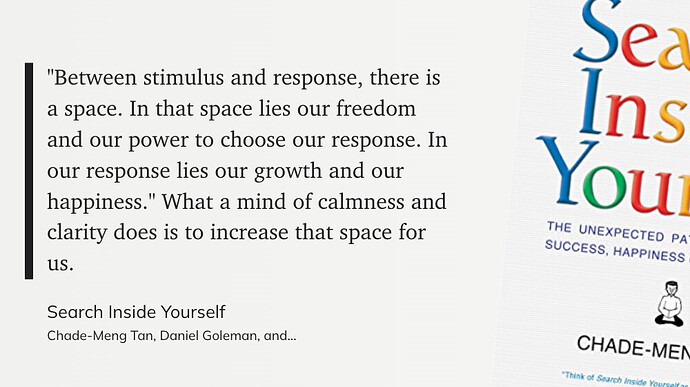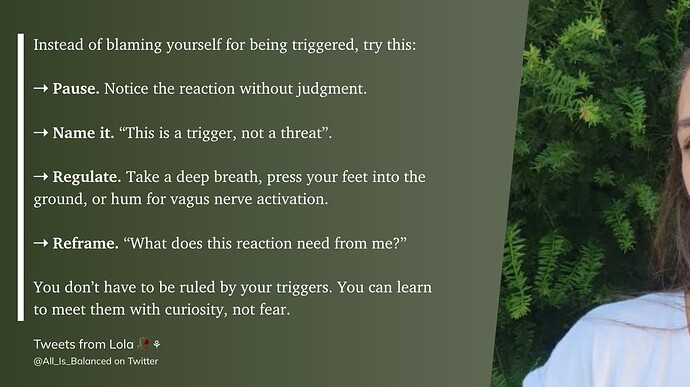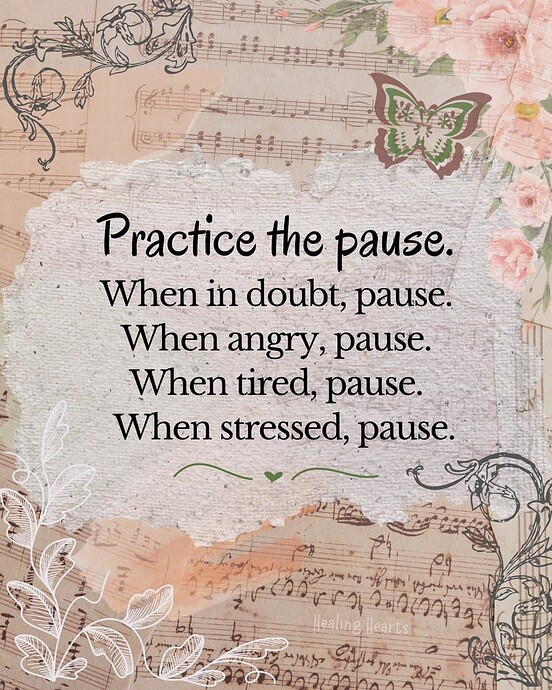“Between stimulus and response, there is a space. In that space lies our freedom and our power to choose our response. In our response lies our growth and our happiness.” What a mind of calmness and clarity does is to increase that space for us.
What matters is pausing long enough to pay attention, to hear yourself, to bring a small respite to the day.
Instead of blaming yourself for being triggered, try this:
➝ Pause. Notice the reaction without judgment.
➝ Name it. “This is a trigger, not a threat”.
➝ Regulate. Take a deep breath, press your feet into the ground, or hum for vagus nerve activation.
➝ Reframe. “What does this reaction need from me?”
You don’t have to be ruled by your triggers. You can learn to meet them with curiosity, not fear.
From Sarah Larsen:
Reacting quickly doesn’t mean you are in control.
It means you are being controlled.
Controlled by your triggers, your attachment wounds and your old patterns.
The truth is, when we’re triggered, our autonomic nervous system gets into the driver’s seat and our rational mind takes a back seat.
We start acting from a place of survival, not intention.
This is why the pause is so powerful.
When you take a moment to breathe, to notice the sensations in your body, to ground yourself in the present—you interrupt the automatic reaction.
You create space between stimulus and response.
And in it’s in that space that transformation happens.
Pausing before you react gives you time to ask yourself:
• What’s really happening here?
• Am I reacting to this moment—or to old wounds?
• What would a secure, grounded version of me do?
At first, pausing can feel impossible.
Your nervous system wants to react because it’s trying to protect you. But the more you practice, the more natural it becomes.
Over time, the pause becomes a bridge from reactivity to intention, from fear to safety, from surviving to thriving.



